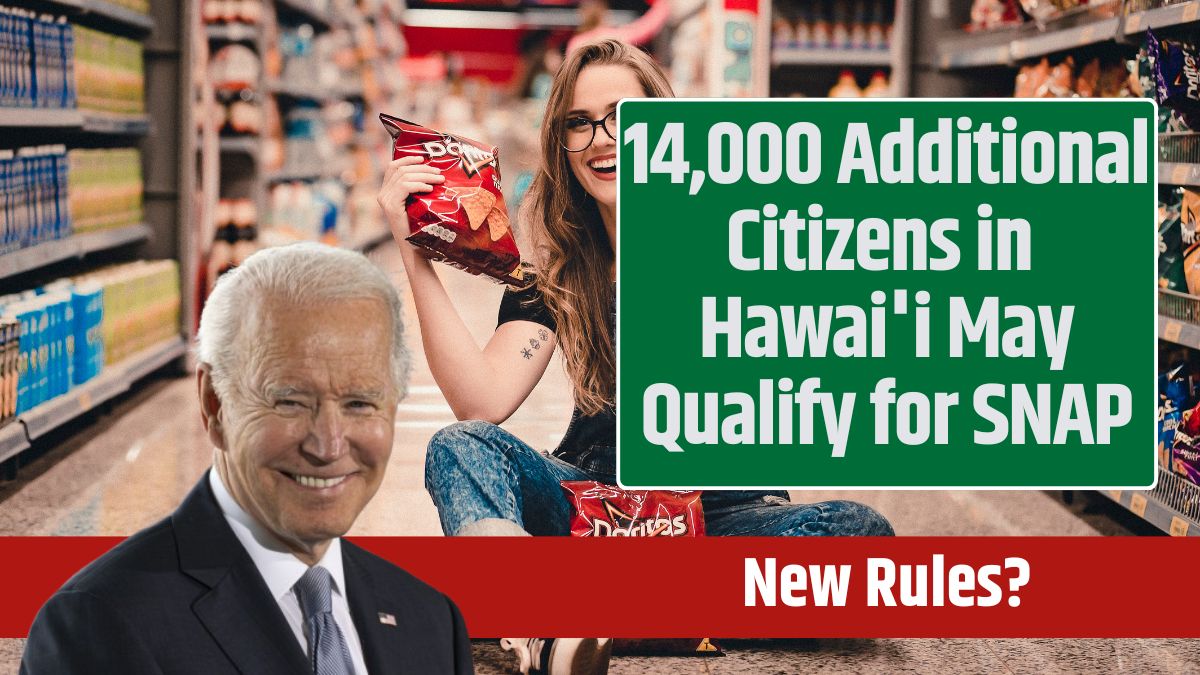In an effort to provide much-needed financial relief for low-income families, Governor Josh Green, M.D. of Hawai‘i has announced a plan to expand eligibility for the Supplemental Nutrition Assistance Program (SNAP), formerly known as Food Stamps.
This measure, which follows recommendations from the University of Hawai‘i Economic Research Organization (UHERO), is expected to help between 13,000 and 14,000 households access an average of $3,200 per year in SNAP benefits.
Hawai‘i’s Cost of Living Crisis
Hawai‘i is known for having the highest cost of living in the United States, making it difficult for many families to afford basic necessities like food and housing.
The state’s working-class families, in particular, have been struggling to make ends meet. To address this issue, Governor Green has proposed $45 million in additional welfare relief, which includes expanding SNAP benefits to more households.
What Will SNAP Provide?
Under the current SNAP program, a family of four can receive up to $1,759 per month in benefits, but this amount will decrease slightly to $1,723 beginning on October 1, 2024 due to adjustments related to the 2025 Cost of Living Adjustment (COLA).
This expansion in benefits aims to provide crucial financial assistance, especially for low-income families who are heavily affected by the state’s high living costs. For the 14,000 newly eligible households, this relief will make a significant difference.
Broad-Based Categorical Eligibility (BBCE)
The changes to Hawai‘i’s SNAP rules are part of a broader effort to make the program more accessible, and they involve the implementation of Broad-Based Categorical Eligibility (BBCE).
What is BBCE?
BBCE is a policy that allows states to remove asset limits for SNAP eligibility, meaning that households with higher savings or certain assets that would have previously disqualified them may now be eligible for benefits.
Additionally, BBCE enables states to raise the income limits for households to qualify for SNAP, increasing the number of people who can access these essential benefits.
Why is BBCE Important?
Previously, families with significant savings or higher incomes (even if they were struggling to cover basic expenses) would have been disqualified from receiving SNAP benefits.
By adopting BBCE, Hawai‘i is eliminating the net income limit, allowing more low-income families to qualify for assistance, which could affect up to 14,000 households.
This approach also gives the state more flexibility in determining eligibility criteria, making it easier for households that are just above traditional income thresholds to still receive support.
Who Will Benefit from the New Rules?
Governor Green has emphasized that this expansion will provide “huge relief for our working-class families,” many of whom are feeling the squeeze from Hawai‘i’s high cost of living.
Low-income households and those with modest savings who previously didn’t qualify due to outdated rules will now have a chance to access SNAP benefits.
The expanded eligibility could benefit:
- Working-class families struggling with high food and housing costs.
- Households with savings or assets that previously disqualified them from SNAP.
- Low-income families who were just above the traditional income limits for SNAP.
These families will receive $3,200 on average per year, providing crucial help in covering their grocery bills and other essential expenses.
Changes in SNAP Payment Amounts
While the eligibility is expanding, SNAP benefits will be slightly reduced due to the 2025 COLA. Currently, the maximum monthly benefit for a family of four is $1,759, but beginning in October 2024, this will decrease to $1,723 per month.
Even though this reduction may seem small, the expansion of eligibility will ensure that more families have access to benefits, which will offset the impact of the COLA adjustment.
Financial Implications for the State
While expanding SNAP eligibility is an essential step in helping struggling families, it does come with a financial cost.
The state will need to make a significant investment to fund this expansion, which will require an estimated $45 million in welfare relief. This funding will come from a combination of state and federal resources.
Governor Green’s proposal is a major commitment to supporting Hawai‘i’s low-income residents, but it will also require ongoing adjustments to ensure that the state can maintain these expanded benefits in the long term.
The changes to Hawai‘i’s SNAP eligibility rules are a critical step toward providing more financial relief to families in need. By adopting Broad-Based Categorical Eligibility (BBCE), Hawai‘i is allowing between 13,000 and 14,000 households to qualify for SNAP benefits, which could amount to an average of $3,200 per year.
These changes come at a time when Hawai‘i’s cost of living is higher than ever, making it essential for the state to provide support to its working-class families.
While the 2025 COLA will reduce SNAP payment amounts slightly, the overall expansion of eligibility ensures that more people will benefit from the program.
Governor Green’s proposal reflects a strong commitment to alleviating poverty and helping Hawai‘i’s most vulnerable families meet their basic needs.
FAQs
What is Broad-Based Categorical Eligibility (BBCE)?
BBCE allows states to remove asset limits and raise income limits for SNAP eligibility, enabling more families to qualify.
How much can a family of four receive in SNAP benefits in Hawai‘i?
Currently, a family of four can receive up to $1,759 per month, which will decrease to $1,723 starting in October 2024.
How many households in Hawai‘i will benefit from this expansion?
Between 13,000 and 14,000 households are expected to qualify for SNAP benefits under the new rules.



















